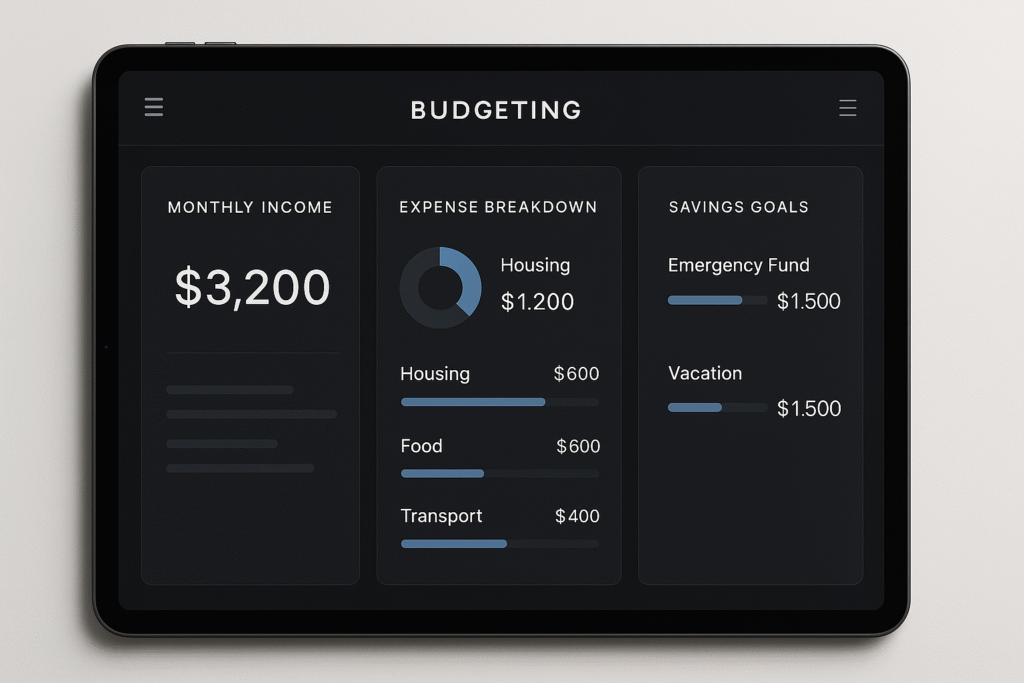The Second Act Wealth Builder: Financial Planning for Men Over 50

Your Definitive Roadmap to Your Second Act Wealth Builder
Table of Contents

The Second Act Opportunity
For many men, the years after 49 represent a unique and powerful chapter in their financial lives. This is the “Second Act”—a time when you may be at the peak of your earning potential, your children may be leaving the nest, and you have the wisdom and experience to make smart, impactful financial decisions. However, this is also a critical decade where the reality of retirement looms large, and the choices you make now will have a profound and lasting impact on your future and your family’s legacy. This is not a time for complacency; it is a time for strategic action.
This comprehensive pillar article is designed to be your go-to resource for navigating the complexities of midlife wealth building. We will delve into the essential topics that every man over 49 must master to achieve financial freedom and long-term security. From effective debt elimination strategies to advanced budgeting and cash flow management, we will provide you with the tools and frameworks you need to take control of your financial destiny.
We will also explore smart investment approaches tailored for midlife wealth growth, address the critical challenge of mitigating the impact of inflation, and guide you through the importance of estate planning to ensure your legacy endures for generations to come.
Our goal is to provide you with actionable steps and a clear roadmap to true financial independence and peace of mind. Whether you are just starting to get serious about your finances or you are looking to optimize your existing plan, this article will provide you with the knowledge and confidence you need to build a prosperous and secure future. So, let’s begin this journey together. Your second act starts now.
Image placement: A professional man in his 50s, looking thoughtfully at a tablet displaying financial charts, with a blurred background of a comfortable home office.
Call to action: We want to hear from you. What is your biggest financial concern right now? Share it in the comments below, and let’s start a conversation.
II. Taking Stock: Your Financial Foundation Assessment
Before you can build a solid financial future, you need to have a clear and honest understanding of where you stand today. For men in their 50s, a comprehensive financial health checkup is not just a good idea—it’s an absolute necessity. This is the time to take a deep dive into your finances, identify your strengths and weaknesses, and create a baseline from which you can measure your progress. This section will guide you through a thorough assessment of your financial foundation, providing you with the tools and frameworks you need to gain clarity and control.
A Comprehensive Financial Health Checkup
Your financial health is a multifaceted picture that encompasses your income, expenses, assets, liabilities, and overall financial preparedness. To get a complete picture, you need to look beyond your bank account balance and consider all aspects of your financial life. This includes a detailed analysis of your cash flow, a comprehensive inventory of your assets and debts, a review of your insurance coverage, and an honest assessment of your retirement savings. By taking the time to conduct this checkup, you will be able to identify areas that need improvement, set realistic goals, and make informed decisions about your financial future.
The 50+ Financial Health Scorecard
To help you with this process, we have created the “50+ Financial Health Scorecard.” This tool will walk you through a series of questions and calculations to help you assess your current financial situation. It covers all the key areas of your financial life, from your emergency fund to your retirement savings, and provides you with a score that reflects your overall financial health. By using this scorecard, you can identify your financial strengths and weaknesses, and create a personalized action plan to address any areas that need improvement.
Actionable Framework: The 50+ Financial Health Scorecard

•Emergency Fund: Do you have at least 3-6 months of living expenses saved in a liquid account? (10 points)
•Debt-to-Income Ratio: Is your total monthly debt payment (excluding mortgage) less than 20% of your gross monthly income? (10 points)
•Retirement Savings: Have you saved at least 8 times your annual salary for retirement? (20 points)
•Insurance Coverage: Do you have adequate life, disability, and health insurance coverage? (10 points)
•Estate Plan: Do you have an up-to-date will, power of attorney, and healthcare directive? (10 points)
•Investment Diversification: Is your investment portfolio well-diversified across different asset classes? (10 points)
•Net Worth: Is your net worth positive and growing year over year? (10 points)
•Financial Plan: Do you have a written financial plan that outlines your goals and strategies? (20 points)
Image placement: A visually appealing infographic of the “50+ Financial Health Scorecard” with clear sections and scoring.
Call to action: Download our free Financial Health Assessment tool to get a detailed analysis of your financial situation and a personalized action plan.
III. Debt Elimination: Breaking Free from Financial Chains
For many men over 49, debt can feel like a heavy anchor, holding them back from their financial goals and dreams. Whether it’s a mortgage, credit card balances, car loans, or student debt, carrying these obligations into retirement can be a recipe for financial stress and insecurity. In fact, a recent study by the National Council on Aging (NCOA) found that the number of older adults with debt has been steadily increasing, with many struggling to make ends meet on a fixed income. This is why debt elimination is not just a financial goal—it’s a critical step towards achieving true financial freedom and peace of mind.
The Debt Crisis Facing Older Adults
The statistics are sobering. According to the NCOA, 41% of households headed by someone between the ages of 65 and 74 carry credit card debt, a significant increase from 27% in 1989. For those aged 75 and older, the percentage has nearly tripled, from 10% to 28%. The median credit card debt for these groups is now over $2,700. This is a clear indication that debt is a growing problem for older adults, and it’s a problem that needs to be addressed head-on.
Strategic Debt Payoff Methods
When it comes to paying off debt, there are two popular strategies: the snowball method and the avalanche method. The snowball method involves paying off your smallest debts first, which can provide a psychological boost and help you build momentum. The avalanche method, on the other hand, focuses on paying off your debts with the highest interest rates first, which can save you more money in the long run.
The best method for you will depend on your personal preferences and financial situation. It’s also important to consider debt consolidation, which can simplify your payments and potentially lower your interest rates. And don’t be afraid to reach out to your credit card companies to negotiate better terms. Many are willing to work with you, especially if you have a good payment history.
Case Study: How John, 52, Eliminated $85,000 in Debt in 3 Years
John, a 52-year-old marketing executive, was feeling overwhelmed by his $85,000 in debt, which included credit card balances, a car loan, and a personal loan. He decided to take control of his finances and created a detailed budget to track his spending.
He then used the avalanche method to pay off his highest-interest debt first, and he was able to pay off all of his debt in just three years. “It wasn’t easy,” John says, “but it was worth it. I feel like a huge weight has been lifted off my shoulders, and I’m now on track to retire comfortably.”
Image placement: A before-and-after visualization showing a mountain of debt being transformed into a clear path to financial freedom.
Call to action: What’s your biggest debt challenge? Share it in the comments below, and let’s support each other on this journey to financial freedom.
IV. Advanced Budgeting and Cash Flow Mastery
For men in their 50s, the concept of budgeting often needs to evolve beyond simple income and expense tracking. This is a time of competing financial priorities, from saving for retirement and paying for college to caring for aging parents and pursuing personal passions. To effectively manage these demands, you need to adopt a more sophisticated approach to cash flow management.
This section will introduce you to advanced budgeting techniques and frameworks that will help you gain control over your money, optimize your spending, and achieve your financial goals.
Beyond Basic Budgeting: Sophisticated Cash Flow Management
Advanced cash flow management is about understanding the nuances of your financial life and making strategic decisions about how you allocate your resources. It’s about creating a budget that is not just a restrictive set of rules, but a flexible and dynamic tool that empowers you to make conscious choices about your spending.
This involves a detailed analysis of your income streams, a thorough understanding of your fixed and variable expenses, and a clear vision of your short-term and long-term financial goals. By mastering your cash flow, you can ensure that your money is working for you, not against you.
The Priority-Based Budgeting System
One of the most effective budgeting frameworks for midlife is the “Priority-Based Budgeting System.” This system helps you allocate your income based on your most important financial goals. It involves categorizing your expenses into three tiers: essentials, priorities, and discretionary.
Essentials are your non-negotiable expenses, such as housing, food, and transportation. Priorities are your most important financial goals, such as retirement savings, debt repayment, and college funding. Discretionary expenses are your wants, such as entertainment, travel, and hobbies. By using this system, you can ensure that you are always funding your most important goals first, while still leaving room for the things you enjoy.

Image placement: A screenshot of a digital budgeting dashboard, showing a clear breakdown of income, expenses, and savings goals.
Call to action: Which budgeting method works best for you? Share your experience in the comments below and let’s learn from each other.
V. Investment Strategies for the Second Act
As you enter your 50s, your investment strategy needs to evolve. The go-go growth mentality of your younger years must be tempered with a healthy dose of realism and a focus on capital preservation. This is not to say that you should abandon growth altogether, but rather that you need to strike a delicate balance between growing your nest egg and protecting what you have already built. This section will provide you with a comprehensive guide to investment strategies for the second act, helping you navigate the complexities of midlife investing and make smart decisions that will set you up for a prosperous retirement.
Investment Philosophy for Men Over 49
Your investment philosophy in your 50s should be guided by a single, overarching principle: smart, sustainable growth. This means focusing on high-quality investments that have a proven track record of performance, while also diversifying your portfolio to mitigate risk. It also means being realistic about your expected returns and avoiding the temptation to chase after the latest hot stock or investment fad. By adopting a disciplined and patient approach to investing, you can build a portfolio that will not only grow over time but also weather the inevitable storms of the market.
Risk Tolerance Reassessment
One of the most important steps you can take in your 50s is to reassess your risk tolerance. As you get closer to retirement, you have less time to recover from a major market downturn. This means that you may need to dial back the risk in your portfolio and shift towards more conservative investments. However, this doesn’t mean that you should eliminate risk entirely. You still need to generate returns that will outpace inflation and provide you with a comfortable retirement. The key is to find the right balance between risk and reward, and to create a portfolio that is aligned with your individual goals and circumstances.
Asset Allocation Strategies
Asset allocation is the process of dividing your investment portfolio among different asset classes, such as stocks, bonds, and real estate. The goal of asset allocation is to create a diversified portfolio that will reduce your overall risk and improve your long-term returns. There are a number of different asset allocation strategies that you can use, but one of the most popular for midlife investors is the “bucket strategy.”
This strategy involves dividing your portfolio into three buckets: a short-term bucket for your immediate needs, a medium-term bucket for your intermediate goals, and a long-term bucket for your retirement savings. By using this strategy, you can ensure that you have the right mix of assets to meet your needs at every stage of your life.
Maximizing Retirement Account Contributions
One of the most powerful tools you have for building wealth in your 50s is your retirement accounts. For 2025, the contribution limit for a 401(k) is $23,500, and the limit for an IRA is $7,000. If you are over 50, you can also make catch-up contributions of an additional $7,500 to your 401(k) and $1,000 to your IRA. And starting in 2025, those between 60 and 63 can make a “super catch-up” contribution of $11,250 to their 401(k). It is essential that you take full advantage of these contribution limits to maximize your retirement savings.
HSA as a Retirement Investment Vehicle
A Health Savings Account (HSA) is another powerful tool for retirement savings. If you have a high-deductible health insurance plan, you can contribute up to $4,300 to an HSA in 2025 if you have an individual plan, and $8,550 if you have a family plan. The money in your HSA grows tax-deferred, and you can withdraw it tax-free for qualified medical expenses. Once you turn 65, you can withdraw the money for any reason without penalty, although you will have to pay income tax on the withdrawals.
Image placement: A series of pie charts showing different asset allocation models for investors in their 50s, ranging from conservative to moderately aggressive.
Call to action: What is your current investment allocation? Share it in the comments below and get feedback from our community of Second Act Wealth Builders.
VI. Inflation Protection: Safeguarding Your Purchasing Power
Inflation is the silent thief that can erode the value of your hard-earned savings over time. For men in their 50s, who are on the cusp of retirement, the threat of inflation is particularly acute. A sudden spike in the cost of living can have a devastating impact on your retirement plans, forcing you to either downsize your lifestyle or risk running out of money. This is why it is essential to have a solid inflation protection strategy in place. This section will provide you with a comprehensive guide to safeguarding your purchasing power and ensuring that your retirement savings will last a lifetime.
Understanding Inflation’s Impact on Retirement
Inflation is the rate at which the general level of prices for goods and services is rising, and subsequently, purchasing power is falling. Over time, even a modest rate of inflation can have a significant impact on your retirement savings. For example, at a 3% inflation rate, the value of your money will be cut in half in just 24 years. This means that if you retire at 65 with a nest egg of $1 million, it will only have the purchasing power of $500,000 by the time you are 89. This is why it is so important to have an investment strategy that will not only grow your savings but also protect them from the corrosive effects of inflation.
Asset Classes for Inflation Protection
There are a number of different asset classes that can help you protect your portfolio from inflation. These include:
•Stocks: Historically, stocks have been one of the best long-term hedges against inflation. This is because companies can often pass on rising costs to their customers, which can lead to higher earnings and stock prices.
•Treasury Inflation-Protected Securities (TIPS): TIPS are a type of government bond that is indexed to inflation. This means that the principal value of your investment will increase with inflation, which will help you maintain your purchasing power.
•Real Estate: Real estate can also be a good hedge against inflation, as property values and rental income tend to rise with inflation. You can invest in real estate directly by buying a property, or indirectly through a real estate investment trust (REIT).
•Commodities: Commodities, such as gold, oil, and agricultural products, can also provide a hedge against inflation. This is because the prices of these goods tend to rise when the value of the dollar is falling.
•I Bonds: I Bonds are a type of savings bond that is issued by the U.S. Treasury. They have a fixed interest rate and an inflation-adjusted rate, which means that they can provide a good return while also protecting your principal from inflation.
Strategic Approaches to Inflation Hedging
The best way to protect your portfolio from inflation is to have a diversified mix of assets that will perform well in different economic environments. This means that you should have a mix of stocks, bonds, real estate, and commodities in your portfolio. It’s also important to have a long-term perspective and to avoid making rash decisions based on short-term market fluctuations. By having a well-diversified portfolio and a long-term investment horizon, you can weather the storms of the market and protect your savings from the corrosive effects of inflation.
Image placement: An infographic that visually demonstrates the impact of inflation on a $100,000 investment over a 20-year period, with and without an inflation protection strategy.
Call to action: How are you protecting your portfolio from inflation? Share your strategies in the comments below and let’s learn from each other.
VII. Estate Planning and Legacy Building
As you enter your 50s, your thoughts may naturally turn to the legacy you want to leave behind. This is not just about the financial assets you will pass on to your heirs, but also about the values, beliefs, and life lessons you want to share with future generations. Estate planning is the process of putting your wishes in writing, and it is one of the most important things you can do to protect your family and ensure that your legacy endures. This section will provide you with a comprehensive guide to estate planning and legacy building, helping you navigate the complexities of this process and create a plan that reflects your unique values and goals.
Why Estate Planning Matters More After 49
For men in their 50s, estate planning takes on a new level of urgency. You have likely accumulated a significant amount of assets, and you may have complex family dynamics, such as children from a previous marriage or a blended family. You may also have a business or other assets that require special planning. By creating an estate plan, you can ensure that your assets are distributed according to your wishes, that your family is protected from unnecessary taxes and legal battles, and that your legacy is preserved for generations to come.
Essential Documents Every Man Needs
Every estate plan should include the following essential documents:
•Will and Testament: A will is a legal document that outlines your wishes for the distribution of your property and the care of any minor children.
•Power of Attorney: A power of attorney is a legal document that gives someone the authority to make financial decisions on your behalf if you become incapacitated.
•Healthcare Directive: A healthcare directive is a legal document that outlines your wishes for medical treatment if you are unable to make decisions for yourself.
•Beneficiary Designations: It is important to review and update the beneficiary designations on your retirement accounts, life insurance policies, and other financial accounts to ensure that they are aligned with your overall estate plan.
Advanced Estate Planning Strategies
In addition to these essential documents, there are a number of advanced estate planning strategies that you can use to protect your assets and minimize your taxes. These include:
•Trusts: A trust is a legal entity that can hold and manage your assets for the benefit of your beneficiaries. There are many different types of trusts, each with its own unique benefits.
•Life Insurance: Life insurance can be a powerful tool for legacy protection, providing your family with a tax-free death benefit that can be used to pay off debts, cover living expenses, or fund a college education.
•Business Succession Planning: If you own a business, it is essential to have a business succession plan in place to ensure a smooth transition of ownership and management.
•Tax-Efficient Wealth Transfer: There are a number of strategies that you can use to transfer your wealth to your heirs in a tax-efficient manner, such as gifting and charitable giving.
Legacy Planning Beyond Money
Your legacy is about more than just your money. It’s also about the values, beliefs, and life lessons you want to share with your family and future generations. You can create a values-based legacy by writing a personal letter to your loved ones, creating a family mission statement, or establishing a charitable foundation.
Image placement: A heartwarming photo of a multi-generational family, with the grandfather sharing a moment with his grandchildren, symbolizing the passing of a legacy.
Call to action: What kind of legacy do you want to leave behind? Share your vision in the comments below and inspire others to think about their own legacy.
VIII. Putting It All Together: Your Action Plan
Now that you have a comprehensive understanding of the key financial challenges and opportunities for men over 49, it’s time to put it all together and create a personalized action plan. This is where the rubber meets the road, and where you will translate your knowledge into tangible results. This section will provide you with a step-by-step guide to creating your own financial roadmap, helping you prioritize your goals, create a timeline for implementation, and stay motivated on your journey to financial freedom.
Prioritizing Your Financial Goals
The first step in creating your action plan is to prioritize your financial goals. This involves identifying your most important objectives and ranking them in order of urgency and impact. For example, if you have a significant amount of high-interest debt, your top priority should be to create a debt elimination plan. If you are behind on your retirement savings, your top priority should be to maximize your contributions to your retirement accounts. By prioritizing your goals, you can ensure that you are focusing your time and energy on the things that will have the biggest impact on your financial future.
Creating Your Personalized Roadmap
Once you have prioritized your goals, you can create a personalized roadmap that will guide you on your journey to financial freedom. This roadmap should include a detailed timeline for implementation, with specific milestones and deadlines. It should also include a list of the specific actions you will take to achieve your goals, such as creating a budget, opening a retirement account, or meeting with a financial advisor. By creating a detailed roadmap, you can stay on track and measure your progress along the way.

The 90-Day Quick Start Guide
To help you get started, we have created the “90-Day Quick Start Guide.” This guide provides you with a step-by-step plan for taking control of your finances in just 90 days. It includes a series of weekly action steps, from creating a budget and tracking your spending to opening a retirement account and creating an estate plan. By following this guide, you can build momentum and make significant progress towards your financial goals in a short amount of time.
Call to action: What is the first step you will take to improve your financial situation? Commit to it in the comments below and let’s hold each other accountable.
IX. Conclusion: Your Second Act Starts Now
You have now embarked on a comprehensive journey through the world of midlife wealth building. You have learned about the unique financial challenges and opportunities that men over 49 face, and you have been equipped with the knowledge, tools, and strategies you need to take control of your financial destiny. From debt elimination and advanced budgeting to smart investing and legacy planning, you now have a clear roadmap to financial freedom and lasting security.
But knowledge is only half the battle. The real power lies in taking action. The choices you make today will have a profound and lasting impact on your future and the future of your family. So, don’t wait for the perfect time to start. The perfect time is now. Your second act is not a dress rehearsal; it’s the main event. And it’s up to you to make it a masterpiece.
We encourage you to join our community of Second Act Wealth Builders. Share this article with a friend who needs to see it, and let’s continue the conversation in the comments below. Together, we can support each other on this journey to financial freedom and create a future of abundance, security, and lasting legacy.
Image placement: A successful and happy older man, enjoying a retirement activity he is passionate about, such as sailing, golfing, or traveling, with a look of contentment and fulfillment.
Call to action: Join our community of Second Act Wealth Builders! Share this article and tag a friend who needs to see it. Let’s build a future of financial freedom together.
References
[1] National Council on Aging. “An Older Adult’s Guide to Paying Off Credit Card Debt.” https://www.ncoa.org/article/getting-help-with-credit-card-debt-5-things-older-adults-should-know/ [2] SmartAsset. “3 Steps to Building Wealth in Your 50s.” https://smartasset.com/retirement/building-wealth-in-your-50s [3] MassMutual. “How to build wealth in midlife.” https://blog.massmutual.com/retiring-investing/how-to-build-wealth-in-midlife [4] Forbes. “Credit Card Debt Among Older Adults.” Referenced in NCOA article. [5] Bureau of Labor Statistics. “Consumer Expenditure Survey.” Referenced in NCOA article. [6] Federal Reserve. “Survey of Consumer Finances.” Referenced in NCOA article. [7] Trust & Will. “2025 Estate Planning Report: Demographic Breakdown.” https://trustandwill.com/learn/2025-report-estate-planning-demographic-breakdown/ [8] SECURE 2.0 Act provisions for retirement savings. Referenced in SmartAsset article.This article is for informational purposes only and should not be considered as personalized financial advice. Please consult with a qualified financial advisor before making any investment decisions.







